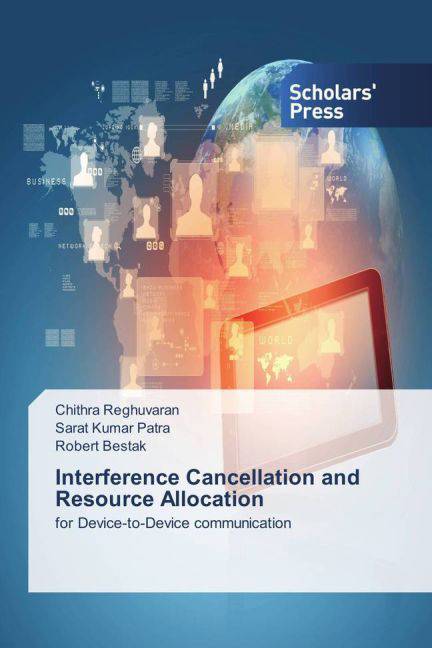
- Afhalen na 1 uur in een winkel met voorraad
- Gratis thuislevering in België vanaf € 30
- Ruim aanbod met 7 miljoen producten
- Afhalen na 1 uur in een winkel met voorraad
- Gratis thuislevering in België vanaf € 30
- Ruim aanbod met 7 miljoen producten
Zoeken
Interference Cancellation and Resource Allocation
for Device-to-Device communication
Chithra Reghuvaran, Sarat Kumar Patra, Robert Bestak
Paperback | Engels
€ 78,95
+ 157 punten
Omschrijving
Device-to-Device (D2D) communication as an underlay to cellular spectrum uses resources of the underlying mobile network which results in different interference scenarios. These include interference from cellular to D2D link, D2D to cellular link and interference among D2D links when multiple D2D links share common resources. In this book, an orthogonal precoding interference cancellation method is initially presented to reduce the cellular to D2D and D2D to cellular interferences when the cellular channel resources are being shared by a single D2D link. This method is then extended for a cluster based multi-link D2D scenario where interference between D2D pairs also exists in addition to the other two interference scenarios. To execute the cluster based interference cancellation approach, a three-step resource allocation scheme is then proposed. The performance of D2D communication practically gets limited due to large distance and/or poor channel conditions between the D2D transmitter and receiver. To overcome these issues, a relay-assisted D2D communication is introduced in this book to maximize the overall system throughput.
Specificaties
Betrokkenen
- Auteur(s):
- Uitgeverij:
Inhoud
- Aantal bladzijden:
- 188
- Taal:
- Engels
Eigenschappen
- Productcode (EAN):
- 9783330652316
- Uitvoering:
- Paperback
- Afmetingen:
- 150 mm x 220 mm

Alleen bij Standaard Boekhandel
+ 157 punten op je klantenkaart van Standaard Boekhandel
Beoordelingen
We publiceren alleen reviews die voldoen aan de voorwaarden voor reviews. Bekijk onze voorwaarden voor reviews.








